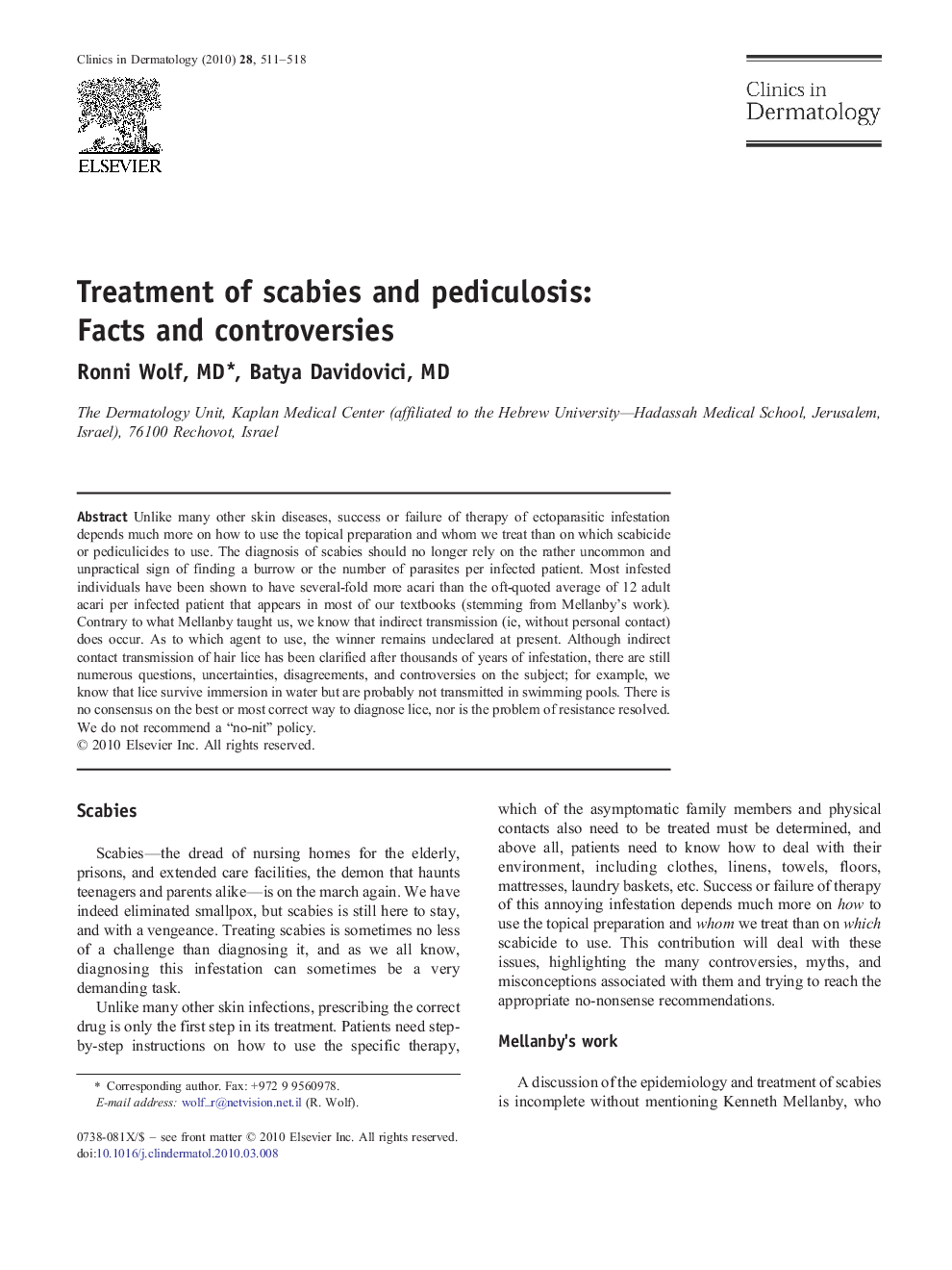| Article ID | Journal | Published Year | Pages | File Type |
|---|---|---|---|---|
| 3194796 | Clinics in Dermatology | 2010 | 8 Pages |
Unlike many other skin diseases, success or failure of therapy of ectoparasitic infestation depends much more on how to use the topical preparation and whom we treat than on which scabicide or pediculicides to use. The diagnosis of scabies should no longer rely on the rather uncommon and unpractical sign of finding a burrow or the number of parasites per infected patient. Most infested individuals have been shown to have several-fold more acari than the oft-quoted average of 12 adult acari per infected patient that appears in most of our textbooks (stemming from Mellanby's work). Contrary to what Mellanby taught us, we know that indirect transmission (ie, without personal contact) does occur. As to which agent to use, the winner remains undeclared at present. Although indirect contact transmission of hair lice has been clarified after thousands of years of infestation, there are still numerous questions, uncertainties, disagreements, and controversies on the subject; for example, we know that lice survive immersion in water but are probably not transmitted in swimming pools. There is no consensus on the best or most correct way to diagnose lice, nor is the problem of resistance resolved. We do not recommend a “no-nit” policy.
